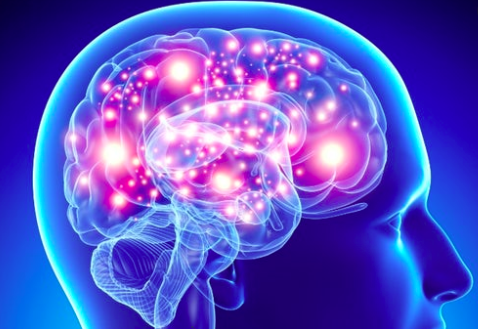
by admin | Oct 16, 2020 | Alzheimer’s Disease, Stem Cell Research, Stem Cell Therapy
Alzheimer’s disease is the most common form of dementia. Among other symptoms, Alzheimer’s disease causes memory loss as nerve cells in the brain become dysfunctional and die. While the disease is known to be related to the accumulation of β-amyloid plaques and neurofibrillary tangles, how and why those things happen is still a mystery. Nonetheless, researchers have created and tested drugs to change the way the brain process β-amyloid and hyperphosphorylated tau (the substance in neurofibrillary tangles) but nothing, so far, has worked in humans. Instead, we are left with anticholinergic drugs, and memantine used to slow the progression of the disease.
These failures of drug development have forced scientists to reconsider how to treat Alzheimer’s disease. Instead of a focus on neuropathology that we cannot understand or control, why not focus on supporting nerve cells that remain or even restore the nerve cells that are lost? This is the hope of stem cell research in Alzheimer’s disease, and the focus of an extensive review article on the subject.
The review article describes the clinical possibilities of different types of stem cells:
- Neural stem cells (NSCs)
- Mesenchymal stem cells (MSCs)
- Induced pluripotent stem cells (iPSCs)
Neural stem cells (NSCs)
NSCs have the magnificent ability to become any type of brain cell, be they neurons or various types of glia. NSCs would be the ideal stem cell treatment for Alzheimer’s disease except for one major problem: There are very, very few NSCs in the human brain. It is nearly impossible to harvest them in high enough numbers and, right now, we don’t have ideal ways to make them multiply and grow in a laboratory. So, while research in NSCs for the treatment of Alzheimer’s disease is well underway, they won’t be widely available any time soon.
Mesenchymal stem cells (MSCs)
Mesenchymal stem cells can become many different types of cells and can be harvested from many places including bone marrow, umbilical cord, and adipose (fat). MSCs are very versatile, and we are improving at safely using them in various diseases, including Alzheimer’s disease. MSCs are one of the more exciting avenues of research in Alzheimer’s disease and other neurodegenerative diseases.
Induced pluripotent stem cells (iPSCs)
iPSCs are a remarkably interesting type of stem cell. They are stem cells that are created by reprogramming cells found in the skin (fibroblasts) to become other cells of interest. Researchers take fibroblasts and genetically alter them to behave like other types of stem cells or fully differentiated cells. Recent work has shown that scientists can repurpose iPSCs to become neural precursor colonies, which are a lot like NSCs described above. If one could take iPSCs from the skin and convert them into NSCs, this could truly be a treatment for Alzheimer’s disease.
Stem cell treatments provide the promising potential to help those with Alzheimer’s disease and other neurodegenerative diseases. While research is ongoing, the breakthroughs that have been recently discovered provide hope to those seeking an alternative option.
Reference: Lee, J. H., Oh, I. H., & Lim, H. K. (2016). Stem Cell Therapy: A Prospective Treatment for Alzheimer’s Disease. Psychiatry Investigation, 13(6), 583–589. https://doi.org/10.4306/pi.2016.13.6.583

by admin | Sep 30, 2020 | Alzheimer’s Disease, Stem Cell Therapy
Alzheimer’s disease, the most common form of dementia, affects nearly 50 million people around the globe. That number is expected to more than double in the next 30 years without effective treatment. Currently, the treatments for dementia are only mildly effective. The few dementia medications that are available simply prolong the inevitable, slowing cognitive decline modestly.
Even with dementia medication, patients with Alzheimer’s disease and most other dementias have progressive memory loss. Over time they lose the ability to perform common everyday tasks. If patients live long enough, they will become dependent on others for all of their care. In this way, dementia is a devastating illness for loved ones.
Alzheimer’s disease and other dementias are neurodegenerative diseases, which means nerve cells in the brain become dysfunctional and die. As brain cells lose their ability to function, the person loses the abilities those nerve cells once performed. Since brain cells have little natural capacity to regenerate, once they are sick and die, that particular brain function may be lost forever.
Stem cells have long been an attractive potential option for Alzheimer’s disease and dementia treatment. Since brain cells become sick and die, the alternative option most recently looked at is to restore and replace those cells with stem cells—cells that can become brain cells? Indeed, stem cells may do so much more. They release countless molecules that help brain cells grow and survive. Not surprisingly, stem cells are the focus of intense research as a treatment for Alzheimer’s disease and other neurodegenerative diseases.
Drs. Duncan and Valenzuela reviewed the current status of stem cells as a possible treatment for Alzheimer’s disease and dementia. The research in animals has been incredibly promising. When stem cells are given to lab animals with experimental dementia, the stem cells find their way to the site of the disease and become new and healthy brain cells.
The research in animals has been so promising, that a number of Phase I and Phase II clinical trials in humans have been completed or are underway. From these trials, we know that stem cells appear to be safe for use in people with Alzheimer’s disease in that no serious adverse events were tied to stem cell use. It is too early to tell if these treatments will change the course of the disease until results are published. For now, we remain cautiously optimistic that the incredible effects of stem cells seen in animals may also translate to the same benefits in humans.
Reference: Duncan T, Valenzuela M. Alzheimer’s disease, dementia, and stem cell therapy. Stem Cell Res Ther. 2017;8(1):111. Published 2017 May 12. doi:10.1186/s13287-017-0567-5

by Stemedix | Apr 15, 2020 | Alzheimer’s Disease, Stem Cell Therapy
As the most common cause of dementia, Alzheimer’s disease (AD) affects hundreds of thousands of people in the U.S. It’s a progressive brain disease which impairs cognition, including memory, behaviors, and thinking. Over time, symptoms worsen and begin to interfere with a person’s ability to perform daily activities.
In people with Alzheimer’s, plaques, or protein deposits, form between nerve cells at a quicker rate, as do tangles, or twisted fibers which accumulate within dead nerve cells. As a result, these damaged nerve cells are unable to transmit necessary electrical signals.
Currently, there is no cure for Alzheimer’s, though some treatments can help to control certain symptoms. In the quest to find a more effective treatment to slow the progression of the disease and potentially even improve symptoms in patients, researchers are turning to regenerative medicine therapies, including stem cell treatment.
Stem Cell Therapy for Alzheimer’s Disease
Stem cells help the body’s own healing mechanisms work more effectively in degenerative conditions such as Alzheimer’s. For instance, some studies have shown immunomodulatory effects, which help to disable the abnormal attack on healthy brain tissue. In others, stem cell transplantation has led to the proliferation or replacement of diseased cells at the specific areas where cells have begun to degenerate.
Stem cells have the ability to replicate many unique cell types throughout the body, including nerve cells. Combined with the fact that they can also reproduce quickly, this poises them for the effective regeneration of damaged brain tissue. As a result, stem cell therapy has the potential to deliver the following improvements for people with Alzheimer’s disease:
· Slowed rate of disease progression
· Improved mood and behavior
· Increased energy levels
· Reduced confusion
· Improved memory and cognition
Renowned Alzheimer’s groups such as the Alzheimer’s Association in the U.S. and the Alzheimer’s Society in the U.K. support and encourage the use of stem cell therapy to find new cures and create targeted treatments which would repair the network of cell-to-cell connections that become damaged in the disease.
Although researchers have yet to establish the precise cause for Alzheimer’s disease, stem cells are opening the door into further findings, providing hope and helping to improve the quality of life in patients.
If you or a loved one is suffering from Alzheimer’s and would like to reap the benefits Stem Cell Therapy can deliver to this disease then contact us today!

by admin | Mar 2, 2020 | Alzheimer’s Disease, Health Awareness
Maintaining proper nutrition is essential for optimal health. Our bodies need more than 30 vitamins and minerals to operate, with these nutrients supporting a host of processes including:
- Tissue production and regeneration
- Red blood cell production
- Nerve signaling
- Formulating chemical messages
While getting adequate amounts of these vitamins and minerals is important for supporting key body-wide mechanisms on a daily basis, it’s also critical for safeguarding our future health. Nutrition helps us minimize the risk of many serious conditions, one of which is dementia.
Can Nutritional Deficiencies Cause Dementia?
In some elderly patients, healthy dietary practices aren’t always
closely followed. This can lead to certain nutritional deficiencies, which can
actually cause cognitive impairment over time. Research shows certain forms of dementia
can be a direct result of deficiencies in specific vitamins, minerals, or
other nutrients. Here are a few nutrients in particular that are necessary for
cognitive function:
- Vitamin B12: Without ample B12, the frontal lobes of the brain become altered, resulting in cognitive or behavioral changes. The vitamin, therefore, supports brain health while playing an important role in maintaining healthy blood and nerve cells. It also aids in the production of DNA. Animal food sources are often rich in B12, including dairy and meat.
- Niacin: B3 or niacin helps to control cholesterol levels. Elderly individuals are especially at risk of developing pellagra, a B3 deficiency characterized by dementia, dermatitis, and diarrhea. Enriched cereals, seeds, poultry, and redfish are good sources of the vitamin.
- Thiamin: Also known as vitamin B1, a deficiency in thiamin can cause damage to the nerves and muscles, including the heart. Thiamin also has such a profound effect on cognitive function that some researchers speculate the vitamin could benefit Alzheimer’s patients, but further studies are needed to support this theory. Thiamin is commonly found in eggs, nuts, seeds, beef, and enriched grain products, such as cereals.
In addition, insufficient hydration
can lead to nutrition-oriented dementia.
Beyond cognitive symptoms,
nutritional deficiencies may also manifest physically in the following ways:
- Sensorimotor challenges
- Poor reflexes
- Extreme thirst
- Anemia
- Numbed sense of touch
- Gastrointestinal issues
Fortunately, these and other nutrition-oriented symptoms can
be avoided with a healthy,
well-rounded diet. In addition, certain individuals may benefit from
supplements if key nutrients can’t be acquired through diet alone. Talk to your
doctor if you think you could benefit from a supplement regimen.

by admin | Feb 26, 2020 | Alzheimer’s Disease, Exosomes
Alzheimer’s disease is a progressive form of dementia, which means its symptoms get worse over time. Alzheimer’s disease primarily affects memory. People with Alzheimer’s disease first have trouble recalling recent memories, but they eventually lose memories of things that occurred earlier in life. Alzheimer’s disease can also cause irritability, social disengagement, and problems performing tasks of daily living. As the disease worsens, it becomes increasingly difficult to care for people with Alzheimer’s disease and most eventually require full-time care. This article is on an Alzheimer’s Disease study that may bring hope to those seeking an alternative to help manage symptoms or halt progression.
There is no cure for Alzheimer’s disease. Treatments include cholinesterase inhibitors (donepezil, rivastigmine, and galantamine) or memantine. These drugs may slightly improve cognition or temporarily slow the disease, but they do little to change the overall course of the disease or truly alleviate symptoms. Since Alzheimer’s disease affects over 5 million people in the United States alone, researchers are aggressively pursuing ways to treat the cause of dementia.
The precise cause of Alzheimer’s disease is unknown;
however, the brains of people with the disease have very high levels of a
protein called beta-amyloid. This protein can cause inflammation, which is
damaging to brain tissue and believed to contribute to Alzheimer’s disease
symptoms.
In the race for a cure, researchers tested the effects of exosomes from mesenchymal stem cells in mice with experimental Alzheimer’s disease study. Without treatment, these Alzheimer’s disease mice have difficulty with various tests of memory and cognition compared to healthy mice of the same age. Astonishingly, mice treated with exosomes retrieved from mesenchymal stem cells showed remarkable improvements in tests of spatial learning, memory, and cognition (e.g. modified Morris water-maze). The exosomes reduced the levels of beta-amyloid protein and beta-amyloid plaques in regions of the brain responsible for learning and memory. The researchers found that these exosomes, taken from the human umbilical cord, contained high amounts of enzymes that break down beta-amyloid proteins. Indeed, treatment with mesenchymal stem cell-derived exosomes reduced brain inflammation (i.e., the exosomes reduced inflammatory cells and inflammatory cytokines). These results apparently indicate treatment with stem cell-derived exosomes reduced brain inflammation, reduced brain beta-amyloid, and improved learning and memory in experimental mice.
More studies will need to be performed in humans to continue
research of this treatment and impact in human cases. Nevertheless, given the
lack of treatments for Alzheimer’s disease, these results are quite impressive.
Few treatments, if any, improve memory or reduce beta-amyloid levels and brain
inflammation. At best, patients currently hope to slow the progression of the
disease and ease symptoms.
Reference: Ding M.
et al. (2018). Exosomes Isolated from Human Umbilical Cord Mesenchymal Stem
Cells Alleviate Neuroinflammation and Reduce Amyloid-Beta Deposition by
Modulating Microglial Activation in Alzheimer’s Disease. Neurochemical
Research. 2018, Nov;43(11):2165-2177.

by admin | Jan 29, 2020 | Alzheimer’s Disease, Health Awareness
Experts have been researching the potential causes of dementia
for quite some time. Like many conditions, it’s believed to result from a
combination of lifestyle, hereditary, and environmental factors. Recently,
however, there’s been one dietary factor catching the attention of researchers:
excess salt. Discover the connection between table salt and dementia risk
below.
Dietary Salt & Cognitive Impairment
According to research published
in October 2019 in Nature Neuroscience,
a link has been established between excessive salt intake and elevated dementia
risk. While experts have long associated poor cerebrovascular function with high
salt diets, this new study suggests high sodium levels don’t just restrict
blood flow to the brain; they can actually affect tau protein levels in the
brain, too.
Tau supports neurons under normal circumstances. It does so
by stabilizing microtubules, the structures which carry nutrients to neurons.
When tau becomes unstable, it can build up in the brain. The buildup
of tau is a hallmark characteristic of Alzheimer’s.
In the rodent study, scientists used nitric oxide to
stabilize the tau, which in turn led to normal cognitive function – even though
blood flow to the brain was still restricted. This suggests that the tau
buildup caused by salt – and not the restricted blood flow – is the true
causative agent behind dementia.
Reducing Salt Intake
Based on these findings, experts are now urging individuals to be mindful of their salt intake. Although further research needs to be completed to confirm the connection between sodium and dementia in humans, reducing salt consumption is a good idea anyhow. Excess sodium can accumulate in the blood when the kidneys can no longer keep up with it, which causes the body to hold onto excess water. This, in turn, increases fluid and blood volume, which puts added pressure on the heart and blood vessels. As a result, the risk for blood pressure, heart attack, and stroke increases.
The
American Heart Association recommends adults take in no more than 2,300 mg
of salt per day, but suggests aiming for an ideal limit of 1,500 mg. The
majority of sodium comes from packaged and prepared foods, so making your own
meals at home with whole ingredients such as fresh vegetables, whole grains,
and lean protein is one of the best ways to reduce salt intake.







 St. Petersburg, Florida
St. Petersburg, Florida
